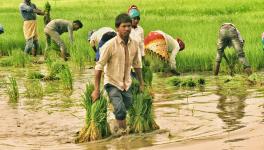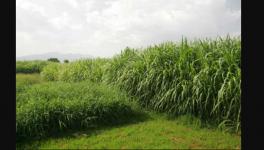Lumpy Skin Disease Affecting Milk Production in India
Representational use only.Image Courtesy: NDTV
Delhi: The Lumpy Skin Disease (LSD) that has killed around 7,300 cattle across eight states and union territories, could pose a serious threat to milk production and distribution if the animals are not vaccinated before the monsoon season end, the India Today reported.
Dairy farmers are concerned about the disease’s impact on milk production and think small dairy farmers would be the most affected by it.
According to the India Today report, in the past two months, around 7,300 cattle have died; 3,359 died in Punjab, 2,111 in Rajasthan, 1,679 in Gujarat, 62 in Jammu and Kashmir, 38 in Himachal Pradesh, 36 in Uttarakhand and 29 in Andaman Nicobar. However, this is just the official figures and the unofficial count could be much higher as stray cattle is not taken into account.
Reports say carcasses of dead cattle are piling up in open fields and highways near villages in the highly affected states.
Meanwhile, in a breakthrough development, ICAR-National Research Centre on Equines (ICAR-NRCE), Hisar (Haryana), in collaboration with ICAR-Indian Veterinary Research Institute (IVRI), Izatnagar, Uttar Pradesh has come up with a homologous live-attenuated LSD vaccine ‘Lumpi-ProVacInd’. The government has plans to commercialise this vaccine.
B N Tripathi, Deputy Director General (Animal Science), ICAR, said the two institutes can produce 2.5 lakh dosages per month and the cost per dose would be around Rs 1-2, the FirstPost reported. He added that the immunity induced by homologous live attenuated LSD vaccines usually persists for a minimum period of one year.
For now, the only vaccine available for LSD is the one used against the goat pox and sheep pox virus, which is only about 70% effective for the former, the India Today report said. It added that in most cases, this vaccine has been found to be ineffective.
Moreover, the new LSD vaccine, Lumpi-ProVacInd is only being given to healthy cattle in farms that have not yet been infected.
Amid this, Gujarat has started to detect a reduction in milk yield amounting to around 50,000 litres per day due to the outbreak of LSD.
However, R S Sodhi, Managing Director, GCMMF, AMUL in Anand, Gujarat, told the India Today that the reduction accounts for a mere 0.25% of the daily procurement of 20 million litres, and it will “not have much impact.”
In Punjab, which has been severely affected by cattle fatalities, officials say milk production has decreased by 15-20%, India Today reported. The milk production is 3 crore litres per day in Punjab, but only 1.25 crore litres is used for commercial purposes and the rest is consumed.
Progressive dairy farmer association (PDFA) president Daljit Singh Sadarpura told India Today more animals have died than reported. He said, "Dairy farmers are suffering as there is a fall in milk production by almost 20-45%. The figures being given officially in Punjab are incorrect. At least 1 lakh animals have died in one district. At least 15,000 animals are dead and are floating in rivers."
There is also concerns that low production will lead to adulteration in milk. The food and drug administration (FDA) has already started collecting milk samples to detect adulteration.
Meanwhile, around 20,000 dairy farmers are agitating in Ludhiana in front of the Very Milk Plant asking for raised milk prices and Rs 1 lakh compensation for cows that died due to LSD.
Milk production may remain depleted for sometime as the affected animals will not be able to reproduce and may not recover to their full capacity either. Since the symptoms are so debilitating, there is a direct impact on milk production in the cattle. “LSD symptoms are high fever and development of skin nodules, which leads to weakness, and therefore, the cows undergo drastic reduction in the milk yield, pregnant cows are being aborted and bulls become sterile. Some of the farms we have been talking to about milk production have dropped by 50 per cent,” said Dr Naveen Kumar, Principal Scientist, ICAR, NCRE institute in Hisar, told the India Today.
Recent cases are reportedly also showing that the infection is now affecting buffaloes, bulls and oxen, who were earlier expected to be resistant to this disease, according to government officials.
Get the latest reports & analysis with people's perspective on Protests, movements & deep analytical videos, discussions of the current affairs in your Telegram app. Subscribe to NewsClick's Telegram channel & get Real-Time updates on stories, as they get published on our website.























